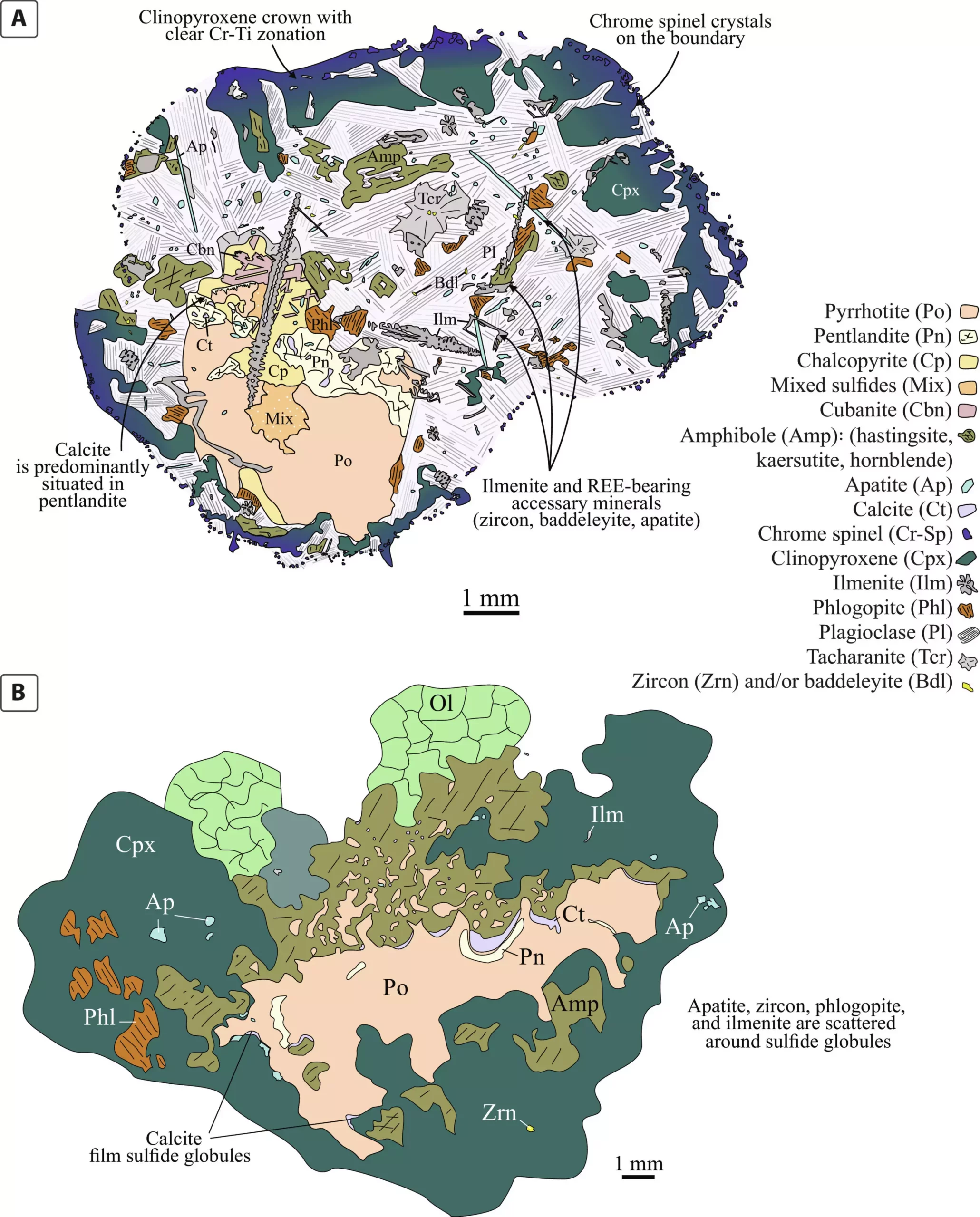In the quest for sustainable resources, understanding how valuable green metals like nickel, platinum, and copper travel from deep within the Earth to its surface is crucial. Recent groundbreaking research from The University of Western Australia has shed new light on this process, challenging long-held assumptions and unveiling a natural “secret ingredient” that facilitates this transfer. Unlike traditional models that focus solely on volcanic eruptions or magma composition, this study emphasizes a sophisticated interplay within magmatic systems—one driven by the unique behavior of carbonatite and metals.
The research presents a compelling analogy, comparing the process to adding oil to water, where two immiscible liquids separate and move independently. In natural settings, a similar separation occurs between carbonatite—a magmatic fluid rich in carbonate minerals—and the surrounding magma. This separation creates a specialized pathway, allowing otherwise heavy and sluggish metals to ascend through Earth’s crust more efficiently than previously thought possible. The key insight is that the pairing of metals with carbonatite acts like a buoyant life jacket, ensuring their safe and efficient rise toward the surface.
What sets this new understanding apart is the recognition of the physical affinity between green metals and carbonatite. These metals tend to stick to this magmatic fluid, forming pairs that are significantly lighter than the surrounding magma. This gravity-defying mechanism explains how dense, high-value metals can bypass the formidable barriers of Earth’s interior. Instead of solitary heavy particles struggling to ascend, they hitch a ride on a lighter, buoyant medium—this revelation can fundamentally alter how we explore and exploit Earth’s hidden mineral wealth.
Implications for Mineral Exploration and Environmental Impact
This scientific breakthrough offers profound implications for mineral exploration strategies. Traditionally, the search for green metals has been a combination of guesswork and high-impact exploratory drilling. Recognizing which volcanoes are likeliest to contain these metal-rich pairs enhances efficiency, reducing unnecessary environmental disturbance and resource expenditure. By prioritizing volcanic regions with active magmatic separation processes akin to those described in the study, companies can streamline their efforts, making the pursuit of sustainable metals more targeted and responsible.
Moreover, this discovery may redefine our understanding of Earth’s internal processes. The notion that magmatic systems naturally facilitate the upward transport of heavy metals through specific pairing mechanisms challenges static models of volcanic activity. It suggests that Earth’s geological machinery is more dynamic and sophisticated than previously assumed, with natural processes instinctively sorting and elevating precious metals in a manner that aligns with our technological needs.
Rethinking these processes encourages a more nuanced approach to resource extraction—one that leverages Earth’s own natural efficiencies. Nonetheless, skepticism remains necessary. The experiments, while compelling, are simplified models of incredibly complex natural systems. Confirming this mechanism across diverse geological contexts will be essential before integrating it fully into exploration paradigms.
The study shines a spotlight on an elegant, efficient natural transport system that could revolutionize the way humanity pursues green metals. It underscores the importance of detailed scientific inquiry and opens pathways to more sustainable, less invasive extraction methods. Although it challenges some traditional assumptions, it ultimately offers hope for a future where Earth’s untapped treasures are uncovered with greater insight and respect.


Leave a Reply